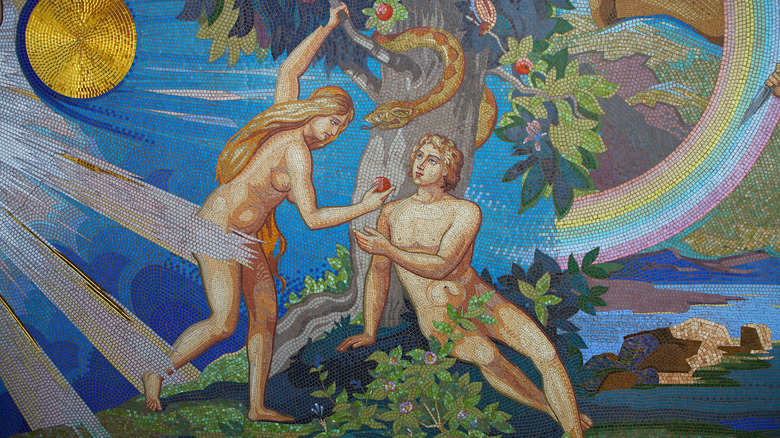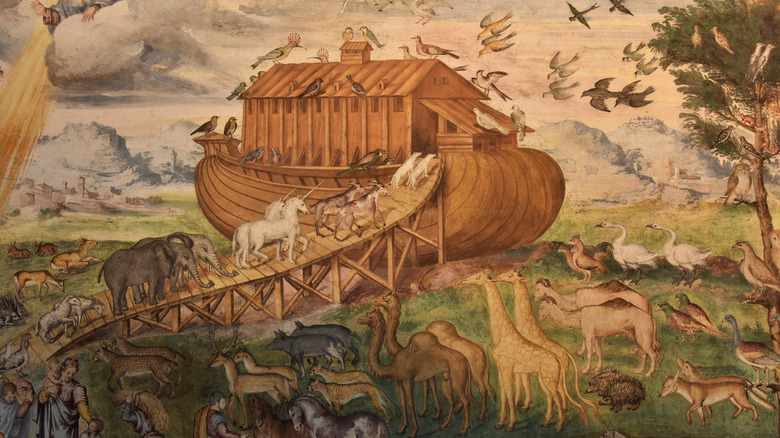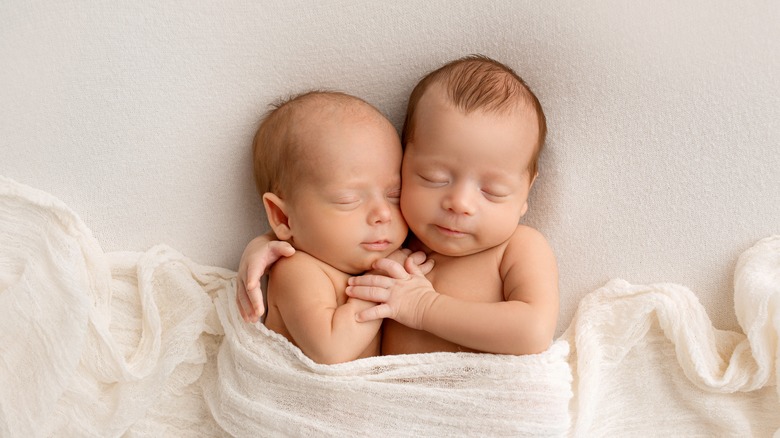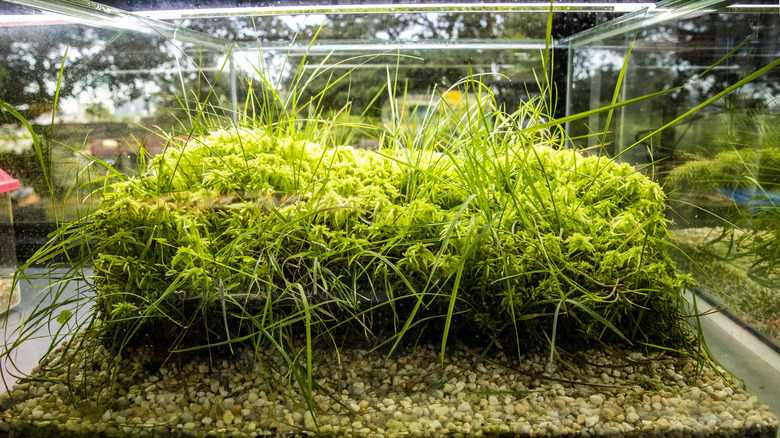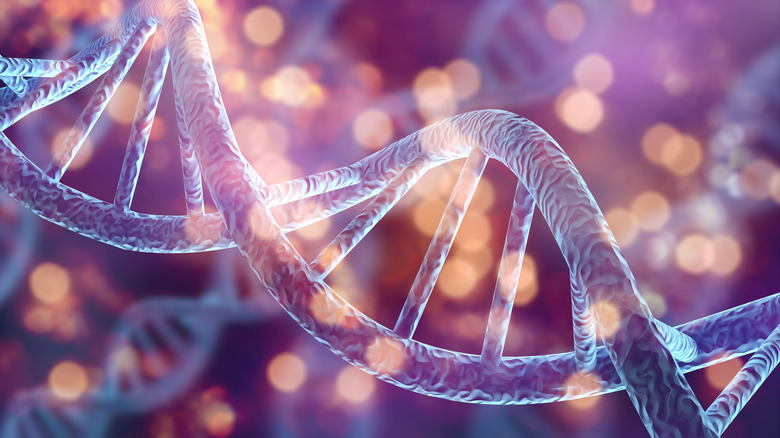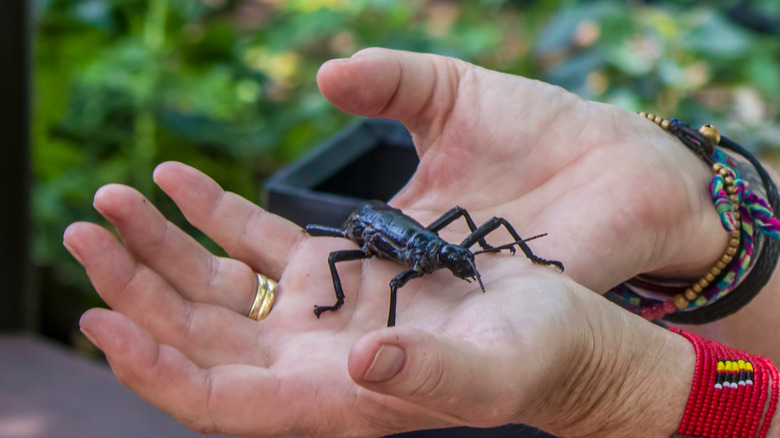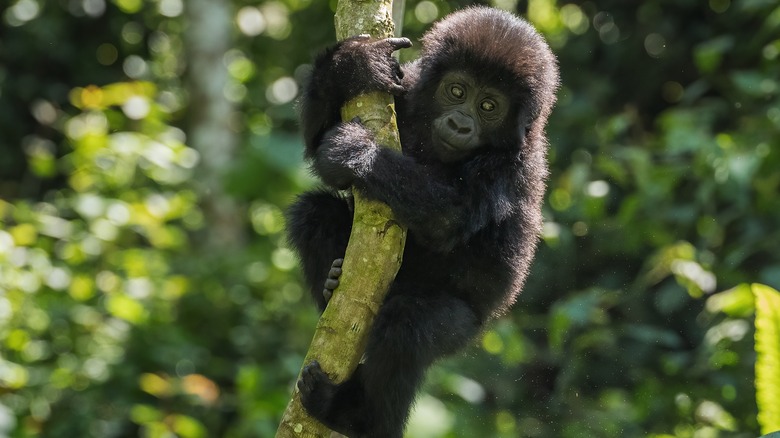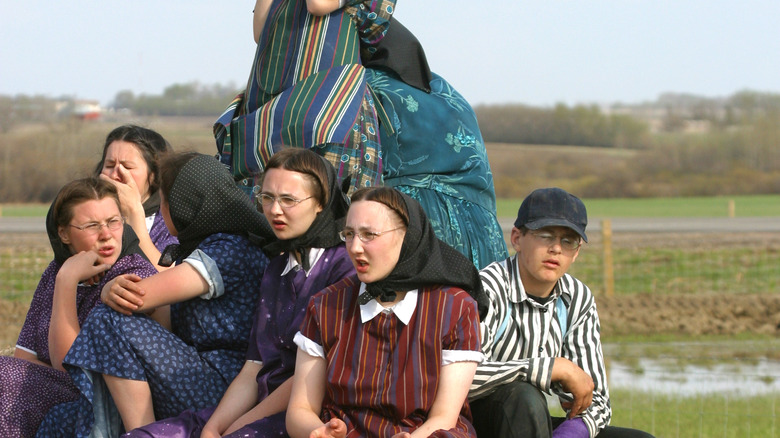Could The Earth Be Repopulated If Only Two People Were Remaining?
Indulge your grimmest dystopian fantasies and imagine an epic catastrophic event. Perhaps it is a meteor, a supervolcano, space aliens, or some combination thereof. It doesn't really matter which, but what is important for this scenario is that there are only two humans left alive. Would it be possible for these two humans to repopulate the Earth? Or are humans doomed to the way of the Tyrannosaurus rex?
Considering there are nearly 8 billion people on the planet today, it seems like repopulating from a stock of two would be a daunting task. Some assumptions need to be made. First, the Earth has to be not so wrecked that there is enough food and water to sustain a repopulation effort (thus volcanoes and meteors probably wouldn't be the disaster scenario). Second, the remaining two people must be fertile humans of child-rearing age.
With these parameters in mind, we shall find that while mathematically it is possible to repopulate the Earth from two people, there are many complications which will prevent it from happening. Let's take a look and find out why.
Religion and myth seem to think it can be done
Religious tradition and myth make repopulation out to be as easy as multiplication. "Norse Mythology A to Z" explains how the Norse myth of the end of the world, Ragnarok, results in the death of all humanity except for two survivors, Lif and his wife Lifthrasir who hid from the disaster. The pair go on to renew humanity in a new world. In Judeo-Christian traditions, some interpretations of the Bible offer Adam and Eve as being the parents of all humanity. Some Islamic traditions hold, according to Britannica, that Eve gave birth to 20 pairs of twins and Adam had a total offspring of 40,000. Other interpretations, as noted by Biologos, assert that the Bible implies that Adam and Eve and their family were but part of a larger population. This latter interpretation is supported by genetic studies which state that it is more probable that humans evolved from a population rather than being the descendants of two individuals.
Another biblical tale of a population bottleneck is that of Noah's ark, which has Noah taking two of every "unclean" animal and seven of every "clean" animal to save them from a cataclysmic flood. This way, after the flood they "may breed abundantly in the earth, and be fruitful, and multiply upon the earth." These traditional beliefs, however, do not take into account the complications of genetics.
The consanguinity taboo
If only two humans were left on Earth, the incest taboo — one of the strongest cultural taboos across human cultures — would have to be broken in a generation. This is because close consanguinity (or the closeness in kinship between parents) is completely unavoidable in order to reproduce. Britannica tells us that most modern cultures today have strong incest taboos and indeed, laws regulate and prohibit it. In the United States, for example, all states except Georgia (per JAMA) prohibit direct lineal marriage such as parent to child and also close marriages of sibling to sibling. And there are only a few exceptions of niece to uncle and nephew to aunt marriages allowable in some states. Going a little further out in the kinship tree, some states allow marriage by first-degree cousins while others bar it, according to FindLaw.
There are pretty good reasons for this taboo. Children of incest often have severe medical problems. This has been seen historically among ruling dynasties that inbred in order to keep power within the family. One example of this is Charles II, the last Hapsburg king of Spain. National Geographic explains how his father was his mother's uncle, and he had many interbred ancestors. Charles was physically and intellectually disabled. He did not have a happy reign.
Any attempt to restore the line of humanity from a stock of two people will necessarily have to grapple with this problem.
Recessive genes make populations vulnerable
What will make repopulating the Earth with only two people very difficult is that the necessary inbreeding will encourage recessive diseases to appear in the growing population. This is explained by the National Human Genome Research Institute, which points out that each person receives two versions of each gene from a parent. Genes can be dominant or recessive. In the case of recessive traits, two recessive genes must be inherited. In a normal population, most recessive genes are suppressed by dominant genes, but in an inbred population, recessive genes come to the fore.
The European Journal of Public Health's published research shows that in populations that are closely related to one another, diseases appear. For example, some populations in North Africa are highly intermarried, resulting in a prevalence of sick cell disease. One dramatic example of how inbreeding can impact a population is described by National Geographic. Pingelap Atoll, an island in the Pacific, is populated from a small stock of survivors from a 1775 typhoon (according to legend). One of the survivors, who happened to be the chief, had a gene for extreme color blindness called complete achromatopsia. This gene occurs in the normal population at a rate of one in 30,000. But on Pingelap, 10% of the population have it, resulting in a high degree of colorblindness. Naturally, colorblindness is mild compared to other recessive types of diseases that can emerge when there is a high consanguinity.
There would be higher infant mortality
If two people were left to repopulate the Earth, one major problem would be conceiving and giving birth to children. Research provided by the article "Assessment of association between consanguinity and fertility in Asian populations" showed that first cousin marriages in India and Pakistan curiously have more live births per capita than marriages between unrelated couples. This is because the infant mortality rate of consanguineous couples is markedly higher. In essence, the related couple has more children because they seek to replace the ones that were lost. What is more, the researchers reported that marriage between close relatives will result in a greater rate of intellectual disability.
In a separate study, the European Journal of Human Genetics pointed out that in cultures which have high rates of closely related marriages, the couples marry young and have ample time to produce many children. So while these studies indicate that it is very much possible to produce generations of inbred children stemming from two sole survivors, there are other severe risks which put the entire population at risk.
The growing population loses immunity
One real danger to a population stemming from two founders is that it will find it hard to fight off disease. This is explained in a paper published in Frontiers in Immunology which examined inbred populations in the Middle East and North Africa. It found that these populations were prone to primary immunodeficiency disorders. These are genetic diseases and can result in a person being afflicted by autoimmune disorders as well as repeated infections. While normally rare in the general population, these are much more prevalent in consanguineous marriages. This is not just limited to humans. One study shows a similar impact on inbred song sparrows.
Curiously, a study published by Evolutionary Psychology hypothesized that inbred marriage may have originated as a way to prevent parasitic infections, particularly malaria. This study showed that regions that had historical parasitic infections were prone to more inbreeding. This practice actually generated a recessive immune response to protect the afflicted person. However, the research noticed that the cost of such protection was great since it weakened the immunity of the inbred person considerably against new types of parasites and diseases.
Practically, the end result is that a population so closely related would be very much at risk of being susceptible to mass death due if a new type of virus or infection was introduced.
The population lacks genetic diversity
One vital key to the long-term success of any species is its genetic diversity. The United States Geologic Survey explains that genetic diversity amounts to the different genes that developed over time among different sets of a species who have had different experiences. Eventually, those genetic differences can become so great that a new species is formed.
When a species is genetically diverse it has a variety of traits that can be used against exigencies. If a new disease comes around there may be a latent allele that comes to the fore to protect the individual from the infection. Genetic diversity is also a measure of how adaptable a species is. Thus, if you have one species that just has genes that are geared for cold climates, it would have much trouble adapting if the environment suddenly grew hotter.
This phenomenon is most clearly seen when looking at populations of animals. Trends in Ecology and Evolution relates that across all different phyla of animals, inbreeding results in reduced genetic diversity. This in turn results in reduced growth rates and higher extinction rates. So while our two remaining humans might succeed in starting a repopulation of the Earth, that subsequent population will be at high risk of extinction.
The population may become something other than human
So let's say our last surviving couple is successful and they manage, beyond all the bounds of genetic roadblocks, to build the human population back to at least a healthy level. But some evidence suggests that in such a scenario, evolution may take hold and make these humans unrecognizable, perhaps even a new species.
This phenomenon is explained in "Islands Spark Accelerated Evolution." As the article's title suggests, species on islands undergo very rapid evolution because of their small and isolated populations. Generally speaking, on an island large animals grow small and small animals become large. One living example are the giant tortoises on the Galapagos Islands and the fossil record shows dwarf elephant species. It stands to reason then that if a gene pool becomes isolated — and what could be more isolated than being the last woman and man alive on Earth? — then hyper evolution would take over. This is, of course, if the evolving human species does not succumb to some disease since it is so highly inbred.
Some animals can do it
There are some animals that have indeed recovered from just a few individuals. One example is Dryococelus australis, with the common name Lord Howe Island stick insect — but they are also nicknamed, according to National Geographic, "tree lobsters." They are huge, prehistoric-looking arthropods which lived on the small Lord Howe Island. In 1918, a shipwreck landed stowaway rats on the island. The invasive mammal made quick work of not only the tree lobsters, but also five bird species and 12 insect species. The tree lobster was declared extinct in 1983 though, as NPR tells us, there had not been a single sighting of the insect since 1920.
Then in 1960, rock climbers visited the nearby island of Ball's Pyramid. This volcanic island, which forms a sharp pinnacle from the sea, surprised the climbers when they found numerous corpses of what appeared to be tree lobsters. Then in 2001, researchers visited the island and discovered the insect several hundred feet up around a bush. After some questions over whether they were legitimate tree lobsters, it was confirmed in 2017 that it was indeed the same species. These apparent refugees bred from just a few survivors. According to the Lord Howe Island Museum, captive specimens were successfully bred. The Guardian tells us that an eradication program in 2019 eliminated the rats on Lord Howe Island although there have been reappearances of the pest since then.
Would humans need a species survival plan?
In the event there are only two people left alive, humans would be classified as critically endangered or worse. The Association of Aquariums and Zoos tells us that species which are threatened with extinction are often put on what are called Species Survival Plans (SSP). These plans work by purposefully breeding endangered animals in captivity in such a way that promotes not only the growth of the number of individuals in the species, but also its genetic diversity. This may result in one institution transferring an individual to another in order to promote genetic diversity and increase the population distribution. For example, the African gorilla's SSP started in 1988 and concentrates on creating sustainable populations within captivity. There are currently about 500 SSPs, which tells you a little about the sorry state of human impact on wildlife.
Of course, if you have only two humans, they couldn't go on an SSP since they would need to administer it themselves. Plus, promoting genetic diversity is impossible to do with such a limited population. It is sort of like being the northern white rhinoceros, a subspecies of white rhino which has only two individuals left — both female. However, as Discover Magazine reports, genetics involving stem cells and using southern white rhinos as surrogates do show a glimmer of hope for the subspecies, since it may be possible to encourage genetic diversity in this way.
There are some human exceptions, sort of
For all this talk of the problems of consanguinity in human populations there are some exceptions that seem to, at least on the surface, fly in the face of any genetic logic. One example are the Hutterites. Britannica explains that this religious community, named after the 16th century anabaptist leader Jakob Hutter, has a worldwide population in Canada and the western United States of some 50,000 although they live in traditional close-knit communities of up to 150 people working on collective farms.
These insular communities tend to intermarry frequently and according to "Families in Context" have one of the highest fertility rates in the world. A 1954 study found that Hutterite women between 45 and 54 had on average 10.6 children each over their lifetimes, although this has dropped in recent years to only 5 children per woman. With such reproduction rates it does seem mathematically possible to repopulate the Earth with only two people — providing they are Hutterites. However, as might be expected, these populations are prone to genetic diseases. Nature reported an analysis of 1,642 Hutterites in South Dakota who were descended from 64 individuals. It showed a prevalence of genetic diseases, specifically if parents were cousins of the first degree. One such disease, according to rarediseases.org, is Bowen Hutterite syndrome, which results in body and organ malformations and brain abnormalities. Infants with it are often prone to early death.
If two doesn't cut it, how many do you need?
So far, we've seen that two human survivors striving to repopulate the Earth would likely result in a genetic disaster for humanity, leaving it vulnerable to extinction through disease. If two isn't enough, then how many humans do you need to repopulate the Earth in a way to keep it genetically diverse and evolutionarily sustainable?
This is debatable. Phys.org states that one of the gold standards of those who strive to save species from the brink is the 50/500 rule. The 50 means that a population needs to have 50 individuals in order to keep it genetically viable. The 500 refers to evolutionary potential. This means that 500 individuals in a species need to be around to account for changing conditions so that it can effectively adapt to a changed environment. Let's say the world suffers a nuclear holocaust. Under this criteria you need 500 people to keep things going.
However, the 50/500 rule has been criticized for being too theoretical and arbitrary. Britannica points out that when discussing minimum viable population, some scientists believe that no hard and fast rule should apply, but rather should be individualized per species.
Can this really happen?
The evidence suggests that two people cannot repopulate the Earth in a sustainable way. This means that if there are two people left, it is likely humanity will join the ranks of the dodo, passenger pigeon, and velociraptor. However, it is interesting to know when examining humanity's deep past that such a situation almost happened, and how a large portion of the human population are in fact already vulnerable.
According to Science, genetic studies show that during the early migrations of human hunter gatherers out of Africa, populations became isolated in two bottlenecks, between 50 to 60,000 years ago. It is unknown exactly what happened, but it seems that a large proportion of the migrating population had either died — perhaps from disease or disaster — or had a small core population. "The Great Human Expansion" says that one of these bottlenecks may have resulted in as low as 450 individuals remaining. It is for these reasons that genetic diversity among Africans is much higher than those of non-Africans. This is why publications such as Genome Biology stress the importance of studying African genetic history for the long-term viability of our species.
